
Pac-Man Vs. is a 2003 maze video game developed by Nintendo and published by Namco for the GameCube. In the game, one player takes control of Pac-Man, who must eat all of the pellets in the maze, while the others control the ghosts to try to catch them. The objective is to be the first to reach a set number of points, selected before the game begins. The player controlling Pac-Man uses the Game Boy Advance to play, while the others use the television to control the ghosts. The game requires the GameCube - Game Boy Advance link cable in order to play.

Advance Wars: Dual Strike, known as Famicom Wars DS in Japan, is a turn-based strategy video game developed by Intelligent Systems and published by Nintendo for the Nintendo DS handheld game console. It is the third installment in the Advance Wars series and was released in 2005 for Japan on June 23, in North America on August 22, in Europe on September 30 and in Australia on March 22, 2006. The game is preceded by Advance Wars 2: Black Hole Rising and Advance Wars and succeeded by Advance Wars: Days of Ruin. Advance Wars is the international title of the Wars video game series, which dates back to the Family Computer game Famicom Wars in 1988.
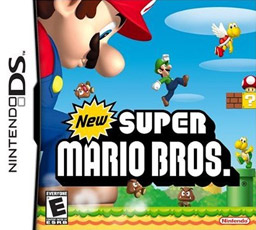
New Super Mario Bros. is a 2006 platform game developed and published by Nintendo for the Nintendo DS. It was first released in May 2006 in North America and Japan, and in PAL regions in June 2006. It is the first installment in the New Super Mario Bros. subseries of the Super Mario franchise and follows Mario as he fights his way through Bowser's henchmen to rescue Princess Peach. Mario has access to several old and new power-ups that help him complete his quest, including the Super Mushroom, the Fire Flower, and the Super Star, each giving him unique abilities. While traveling through eight worlds with more than 80 levels, Mario has to defeat Bowser Jr. and Bowser before saving Princess Peach.

Age of Empires: The Age of Kings is a turn-based strategy video game developed by Backbone Entertainment and published by Majesco Entertainment for the Nintendo DS handheld video game console. It is a spin-off of Microsoft's Age of Empires series.

Star Fox Command is a shoot 'em up video game, the fifth game in the Star Fox series, published by Nintendo for the Nintendo DS in 2006. Star Fox Command was announced at the E3 2006 conference, under the name Star Fox DS. Command is the first Star Fox game for a handheld, and supports the Nintendo Wi-Fi Connection, making it the first online Star Fox game. The game was re-released for the Wii U Virtual Console service in 2015.

Bionicle Heroes is a 2006 video game published by Eidos Interactive and TT Games Publishing and based on Lego's Bionicle line of constructible action figures. The game was released in November 2006 on PlayStation 2, Xbox 360, GameCube, Microsoft Windows, Game Boy Advance, and Nintendo DS; a Nintendo Wii version was later released in April 2007. The home console and PC versions were developed by Traveller's Tales, while Amaze Entertainment developed the handheld versions. A version of the game for mobile phones, developed by Universomo, was also released. The home console and PC versions of the game are third-person shooters, while the Game Boy Advance version is a run 'n' gun shoot 'em up and the Nintendo DS version is a first-person shooter. The story of Bionicle Heroes, where the player seeks to liberate the island of Voya Nui and its inhabitants from the villainous Piraka, is not canon to the official Bionicle story.
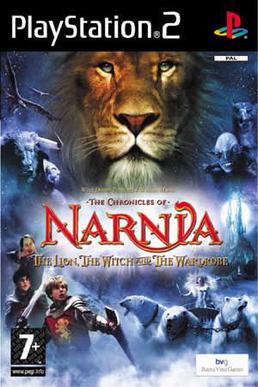
The Chronicles of Narnia: The Lion, the Witch and the Wardrobe is an action-adventure game released in 2005 by Traveller's Tales and Amaze Entertainment. The game is based on the novel-adapted movie of the same name. It was released in November before the movie for most major consoles including the GameCube, PC, Xbox, PlayStation 2, Nintendo DS, and Game Boy Advance. Also in 2005, a role-playing game, a strategy game and a chess game were released for wireless phone systems by Disney Mobile. A significant feature has William Moseley, Skandar Keynes, Anna Popplewell, Georgie Henley, Elizabeth Hawthorne, and Jim Broadbent reprising their roles from the film.
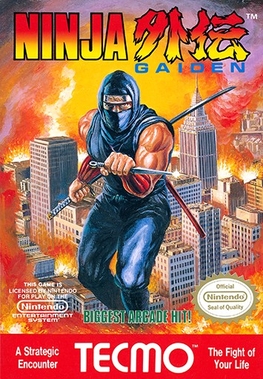
Ninja Gaiden, released in Japan as Ninja Ryūkenden and as Shadow Warriors in Europe, is an action-platform video game developed and published by Tecmo for the Nintendo Entertainment System. Its development and release coincided with the beat 'em up arcade version of the same name. It was released in December 1988 in Japan, in March 1989 in North America, and in August 1991 in Europe. It has been ported to several other platforms, including the PC Engine, the Super NES, and mobile phones.

Heroes of Mana is a 2007 real-time strategy video game developed by Brownie Brown and Square Enix and published by Square Enix for the Nintendo DS. It is the ninth game of the Mana series and the fourth entry in the World of Mana subseries, following the release of Dawn of Mana three months prior. Set in a high fantasy universe, Heroes of Mana follows a young soldier, Roget, as he journeys to defend several nations from the ruthless aggression of his own country in a series of battles.

TMNT is an action video game featuring the Teenage Mutant Ninja Turtles. It was developed by Ubisoft Montreal and published by Ubisoft for Xbox 360, Wii, PlayStation 2, GameCube, Nintendo DS, and PlayStation Portable, as well as for Microsoft Windows on March 20, 2007. It is based on the 2007 film of the same name.

Ninja Gaiden: Dragon Sword is a 2008 action-adventure video game released for the Nintendo DS, developed by Team Ninja and published by Tecmo. A main installment in the Ninja Gaiden series, it features Ryu Hayabusa as the protagonist. The game is the first portable video game title in the series to be developed by Team Ninja and the first game developed by this company to be released for the Nintendo system. Dragon Sword is set between Ninja Gaiden and Ninja Gaiden II.
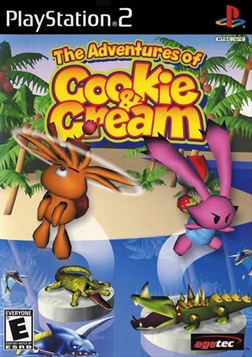
The Adventures of Cookie & Cream, known as Kuri Kuri Mix in Japan and Europe, is an action-adventure video game developed by FromSoftware for the PlayStation 2 released in 2000. In 2007, it was ported to the Nintendo DS as Cookie & Cream.
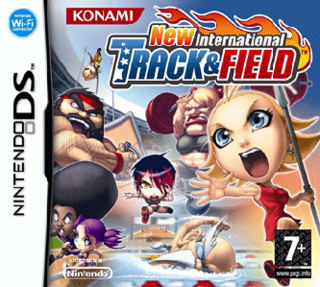
New International Track & Field is a sports video game by Konami for the Nintendo DS. Developed by Sumo Digital, it is the latest game in Konami's Track and Field series.

Advance Wars: Days of Ruin, released as Advance Wars: Dark Conflict in Europe and Australia, is a turn-based strategy video game for the Nintendo DS handheld game console. It is the fourth installment in the Advance Wars series after Advance Wars: Dual Strike and was released in 2008 for North America on January 21; in Europe on January 25; and in Australia on February 21. A Japanese release was planned under the title of Famicom Wars DS: Lost Light, but was canceled after a series of delays. It finally became available in Japan through Club Nintendo in October 2013 as a downloadable platinum status reward for the Nintendo 3DS family of systems.
Tower defense (TD) is a subgenre of strategy games where the goal is to defend a player's territories or possessions by obstructing the enemy attackers or by stopping enemies from reaching the exits, usually achieved by placing defensive structures on or along their path of attack. This typically means building a variety of different structures that serve to automatically block, impede, attack or destroy enemies. Tower defense is seen as a subgenre of real-time strategy video games, due to its real-time origins, even though many modern tower defense games include aspects of turn-based strategy. Strategic choice and positioning of defensive elements is an essential strategy of the genre.

Spore Creatures is a 2008 science fiction adventure game developed by Griptonite Games and published by Electronic Arts. The game is a spin-off of Spore in which a player controls and evolves a creature of their creation to save another creature from the clutches of an alien who plans on dominating the galaxy.

Lock's Quest is a real-time strategy tower defense video game developed by 5th Cell and published by THQ. It is 5th Cell's second Nintendo DS game. Players control Lock, a young man forced to help defend the kingdom of Antonia from an invasion of clockwork soldiers. The gameplay revolves around constructing defences such as walls and turrets on isometric battle maps, then controlling Lock to fight alongside and maintain his defences.

Sonic Colors is a 2010 platform game published by Sega. It follows Sonic's quest to stop his nemesis Doctor Eggman from enslaving an alien race and taking over the world. The gameplay is similar to prior Sonic games, with players collecting rings and defeating enemies; the camera perspective often switches from third-person to side-scrolling perspectives. The game also introduces Wisps, power-ups the player can use to increase attack power and reach new areas.

Crash of the Titans is a 2007 platform video game developed by Amaze Entertainment and published by Vivendi Games for the Nintendo DS. It is an installment in the Crash Bandicoot series and an alternate version of the console-based title of the same name developed by Radical Entertainment.

















